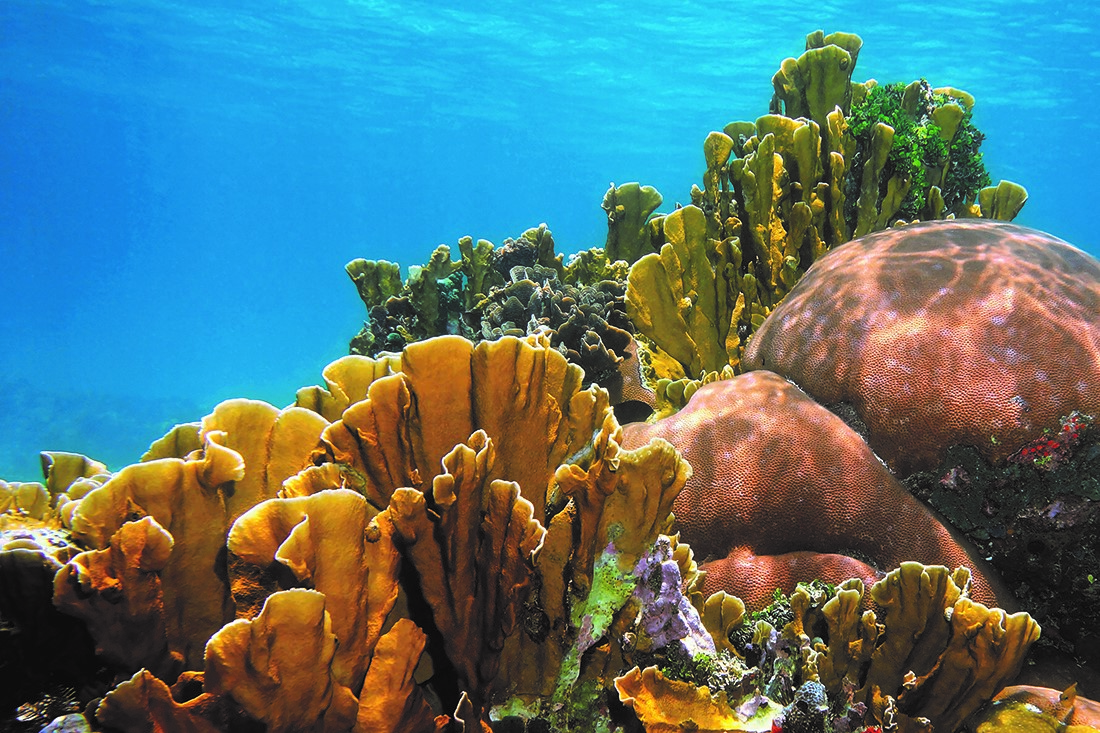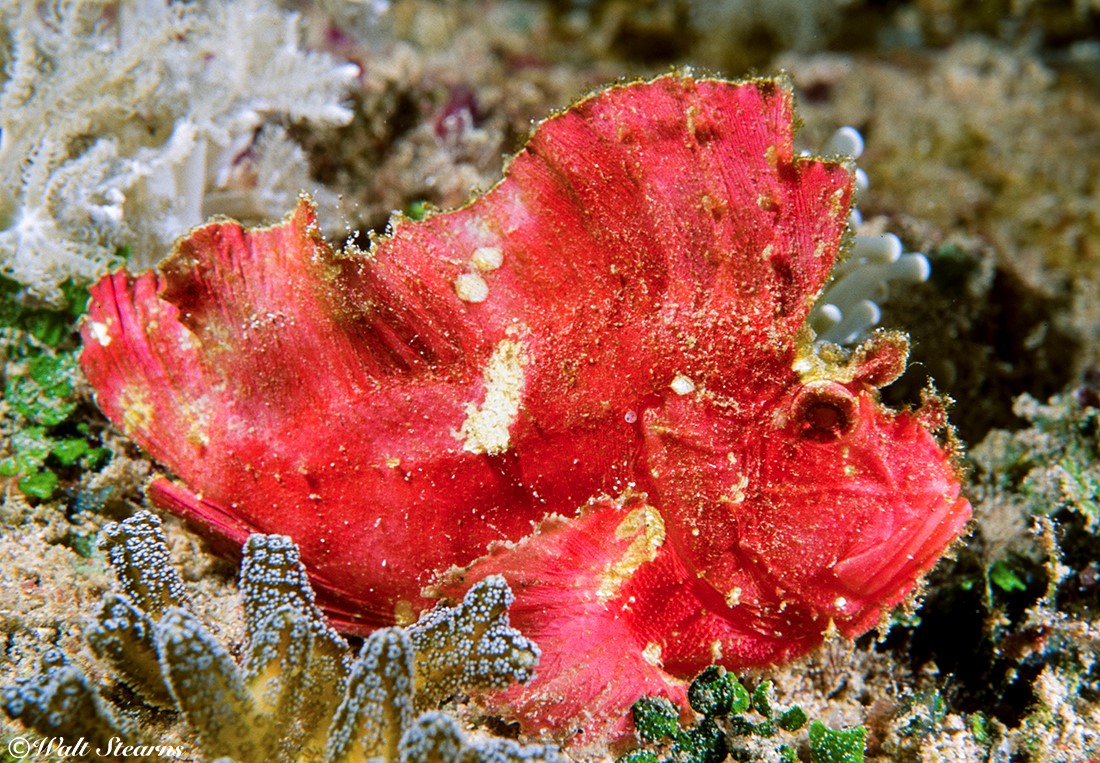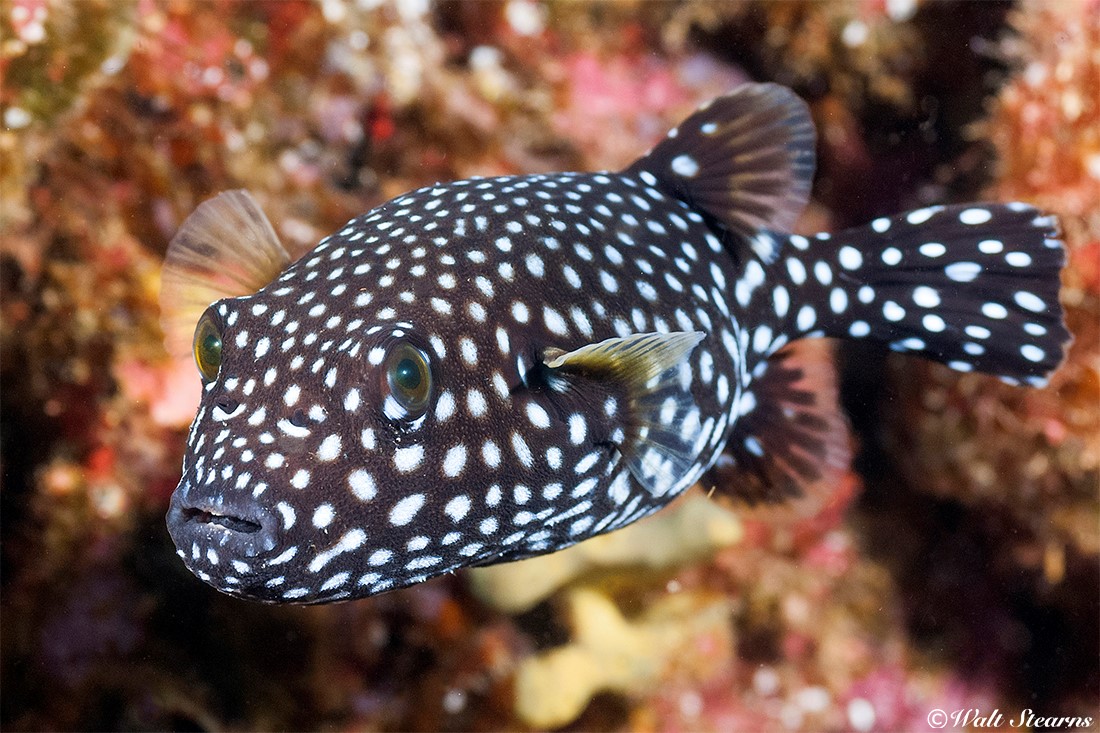
Diving a coral reef is a great way to relax. But that's because we divers are just visitors to the aquatic realm. We may not fully understand the constant cycles of life and death unfolding before us, or the constant interactions of hunted and hunter that play out day and night. Take a closer look and you'll realize that most everything in the water is either looking for something to eat, or trying to escape being eaten. There are a number of tactics reef dwellers use to keep from landing on the supply side of the food chain. Some retreat to fortresses within the reef, or dig protective burrows. Schooling fish seek safety in numbers and try to confuse a would-be attacker with coordinated swimming maneuvers, or through misdirection such as eyespots or stripes. Crustaceans armor up in suits of hardened calcium carbonate, and all manner of critters use coloration and patterning to blend in and hide. On top of all this, there are also marine animals that deploy unconventional tactics such as poisonous darts, venomous spines and chemical warfare.
No Touch Zones
Touching corals is one of diving's big taboos. And not just because it's bad form. Human contact with living coral can cause potential harm to fragile polyps, and it can also be a painful experience. Corals are related to hydroids, jellyfish and sea anemones; all of these organisms possess microscopic stinging organelles called nematocysts. These tiny stinging filaments look like miniature harpoons. Normally, these darts are used to subdue and capture tiny prey. Each nematocyst injects a small amount of toxin into the victim, which is then pulled into the poly by tiny filaments. But the same stinging darts that are used to reel in dinner can also give divers a painful sting. Some of the strongest stings come from the fire corals. Marine biologists would tell you that fire corals are not true corals, and are instead hydrozoans that are cousins to the Portuguese man o' war. This distinction will probably be lost on an unfortunate diver who comes in close contact with a fire coral and is hit with a barrage of tiny nematocysts.
 |
| These fan-shaped fire coral formations are covered in thousands of tiny polyps, each armed with an array of stinging nematocysts. |
Toxic Tips
Fish that lack the speed needed for a fast getaway have developed other ways to deter a would-be predator. A favorite tactic developed by some slower-moving marine animals is to deploy an arsenal of venomous spines. One of the more spectacular examples of this type of weaponization are used by lionfish. These ornately-decorated fish have transformed their dorsal, anal, and pelvic fins into spectacular 360-degree deterrent that protect these fish from attacks from above, below or even behind. A lionfish's vivid coloration pattern is the equivalent of a hazmat warming sign, letting would-be predators know that they are in for a very painful sting if they get too close.
 |
| In addition to the venomous spines common to all lionfish species, the gurnard lionfish sports outsized pectoral fins, which can be spread to make the fish seem larger and more menacing. |
Neurotoxic Needles
Lionfish may be the most flamboyant fish to arm themselves with poison-tipped spikes, but there are many more members of the Scorpaenidae family that employ similar tactics, while also adding the additional insurance of camouflage. Prime examples include the scorpionfishes and stonefishes, which often develop tassels, warty textures and mottled coloration that matches the bottom terrain where they live. They are all venomous to a greater or lesser extent, with the stonefish being the most poisonous. They secrete potent neurotoxins from glands at the base of their needle-like dorsal fin spines, which stick up when disturbed or threaten. This creates a very effective defense when these bottom-dwelling fish are attacked from above.
 |
| Because scorpionfish spend most of their time on the bottom, they place their poisonous spines up top to deter attacks from above. |
Living Hazmat
Instead of creating arsenals of spikes and stingers to defend themselves, some marine animals internalize their toxic talents. This is the strategy used by some of the slowest-moving and seemingly most-vulnerable animals on the reefs: the nudibranchs. Lacking in any type of protective shell, and unable to outrun even the slowest of predators, these sea slugs sometimes choose to eat poison. This practice is most common among members of the sponge-eating droid group of nudibranchs. They ingest and concentrate the sponge’s natural chemical defenses into their own flesh to render themselves distasteful to predators. One nibble is usually enough to let a predator know that these sea slugs won't make for a tasty dinner.
Snacking on sponges isn’t the only way nudibranchs develop chemical defenses. Some species are also able to produce their own toxic deterrents, including a dose of sulphuric acid excreted when the animal is touched. The bright colors and intricate patterns that endear many divers to nudibranchs give visual warning to their toxic nature. Not all nudibranchs are filled with poisons, but some that aren’t have evolved to mimic the colorations and skin patterns of those that are.
 |
| Rather than trying to blend in with camouflage coloring, this nudibranch uses bright colors to proclaim its toxic status to potential predators. |
A Three-Pronged Defense
Pufferfish are best known for their ability to turn themselves into spine-covered balls when threatened. This inflationary tactic makes the fish seem larger than life, and will deter most attackers from trying to bite and swallow. But it’s just the puffer’s first line of defense. A large-jawed predator that decides it can handle a puffed-up puffer will find its mouth full of a highly toxic substance called ‘tetrodotoxin,’ making puffers an unpleasant, often lethal, choice of prey. This neurotoxin is found primarily in the puffer’s ovaries and liver, although smaller amounts exist in the intestines and skin, as well as trace amounts in muscle. It does not always have a deadly effect on the larger predators, such as sharks, but it can kill humans who are foolish enough to sample a pufferfish fillet. And if the spikes and poison don't do the job, some puffers have the added defense of sharp, erectable spines and they have sharp teeth that can take a painful bite out of their attacker. With this triple whammy, pufferfish certainly make up for their slow swimming and seemingly docile nature.
 |
| This pufferfish may seem cute and comically vulnerable, but when threatened, it can inflate and raise a hidden array of body-cladding spikes. |
Prickly Prospects
When a sea urchin needs to get up and move, they can reach speeds up to .001 miles per hour. Not exactly escape velocity. So instead of trying to run, they become living pincushions protected by hundreds of sharp spines that would make anything think twice about taking a bite. In addition to their spear-like shape, urchin spines may be filled with venom. Some species such as the purple sea urchin add in another defense. Nestled between the spines are small tentacles known as pedicellariae, which are tentacle-like growths with jaws that can bite and inject a stronger form of the venom found on the spines.
 |
| Foraging fish would have a hard time taking a bite out of this urchin. The spikes aren't just sharp, they can also inject venom. |
| Fire on the Reef When night falls on the reef, the worms come out of hiding. But members of the fireworm family don't rely entirely on the cover of darkness for safety. These centipede-like creatures are covered in a coat of poisonous white bristles that are raised when the worm senses danger. Each hollow bristle is filled with a potent venom, have tips that can penetrate flesh, and break off to deliver a potent sting. Fireworms are often enticingly beautiful and may emit a glow, but smart divers know to look and not touch. |
|
